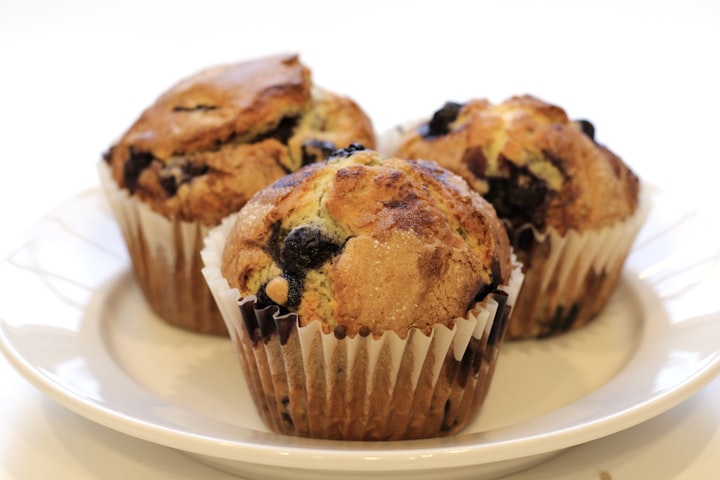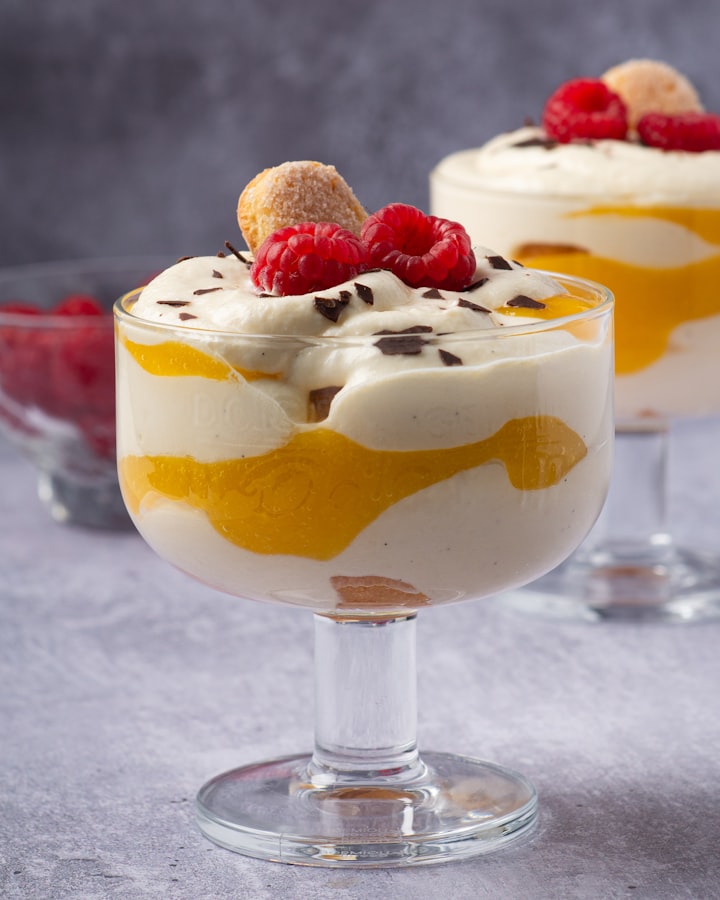6 Easy Baking Swaps to Healthify Your Treats
Baked goods can still be nutritious

I baked a lot when I was younger, but as my career got busier, I stopped. I only tied on the apron again when lockdown began more than a year ago (as did many others!). It wasn’t long before I lived for those warm fluffy muffins and soft, chewy cookies fresh from the oven.
But this rediscovered hobby posed a conflict to my waistline. Although I love to exercise and work out 4–5 times a week, I quickly realized that no amount of physical activity would outpace the calorie-laden bakes I was pumping out of my kitchen.
So I started searching for ways to keep the calorie and sugar content down in my sweets.
As it turns out, you can bake delicious treats that won’t undo your 40-minute sweat session in a single bite. Better still, you can make them with a high nutritional content that helps support your fitness goals.
It all comes down to making a few smart substitutions. These are my six favorite baking swaps that have transformed my baked goods from waist-widening to fitness-fueling.
1. Almond Flour Instead of White Flour
Once I discovered almond flour, I became obsessed, and now I use it for nearly all my baked goods. It’s still very calorie-dense — however, you get way more bang for your buck in terms of nutritional content than you do with regular white flour.
It’s also low carb, which can help keep your macros more balanced.
I’m always looking for foods that offer either fiber or protein, and almond flour has both in spades. Just a ¼ cup has 3 grams of fiber and 8 grams of protein.
Baking with Almond Flour
You may not always be able to substitute almond flour for white flour, depending on what you’re baking. It also contains a lot more moisture than regular flour, and if you don’t get the balance right, it can make your baked goods seem a little sticky.
Typically, if you’re baking with almond flour, you will need to use about 25% less of it than you would with regular flour. For example, if the recipe calls for 3/4 cups of white flour, I’d use a heaping half cup.
Almond flour also tends to bake quicker. To prevent overbaking, lower the oven temperature by about 25 degrees Fahrenheit.
Almond Flour-Friendly Recipes
- Cook Eat Paleo’s Paleo Apple muffins
- Healthy Recipes Blogs’ Almond Flour Cake
2. Monk Fruit Extract Instead of Sugar
Monk fruit is a spherical fruit from Southeast Asia sometimes referred to as “Buddha fruit.” Although it’s been around for decades, its use as a sweetener was only approved by the FDA in 2010.
Its sweetness comes from its mogrosides, which is not a type of sugar, but a special antioxidant. All the sugars from the fruit are removed during the extraction process.
Because the extract is 100 times sweeter than white sugar, it’s often mixed in with inulin or erythritol to tame its strength. But you can also find it in its pure form or as drops. It has zero calories or carbs, making it a great alternative for sugar in your baked goods.
Monk fruit may also offer some additional health benefits, although the topic is not well-researched. We know that mogrosides have anti-inflammatory and antioxidant effects and can help prevent damage to the body’s DNA. And studies in mice revealed that mogrosides might also have anti-cancer properties.
Baking with Monk Fruit
Like almond flour, you likely need to scale back how much you use in your baking recipes. It may require a bit of experimentation on your part, but you can try swapping a cup of sugar with ⅓ cup of monk fruit.
If you use Lakanto or another brand mixed with erythritol, you can stick to a 1:1 ratio.
Keep in mind the texture and taste won’t be identical to that of sugar, and some people find it takes a little time to get used to the difference. Personally, I enjoy the taste of monk fruit and haven't missed using sugar.
Monk Fruit Friendly Recipes
- I Can’t Believe It’s Low Carb’s Best Keto Chocolate Chip Cookie Recipe
- Life Made Sweeter’s Keto Chocolate Cake
3. Oat Milk Instead of Cow’s Milk
Coconut milk and almond milk have always been the apparent subs for regular milk, but oat milk is my go-to for baking. First of all, I find it tastes better in baked goods than the alternatives.
But it also has an impressive nutritional profile. Although it has less protein than regular milk, it’s still more than coconut milk or most nut milk. It also contains fiber and a healthy helping of vitamins, including calcium, vitamin D, Phosphorus, and Vitamin B12.
Although you can buy oat milk, you can easily make your own at home with nothing more than rolled oats, some water, and a blender. (This post from Minimalist Baker has a great step-by-step tutorial!)
Baking with Oat Milk
Oat milk has a similar consistency to whole milk, and, for the most part, you can seamlessly swap oat milk for regular milk in most baked goods. I find it’s particularly great for muffins and cupcakes.
Just give the carton a good shake before you pour for the best results. Keep in mind oat milk cannot sub for heavy creams.
I also don’t use oat milk for much outside of baking. I find it’s not great in more savory dishes or my (decaf) coffee, for example.
Oat Milk-Friendly Recipes
- Food 52’s Oat Milk London Fog Cake
- Willa’s Kitchen’s Ciara’s Fluffy Dairy Free Vanilla Cupcakes
4. Greek Yogurt Instead of Sour Cream
Once you start cooking with greek yogurt, you’ll never go back to sour cream! All the taste is there, but it gives your baked goods a blast of protein.
50 grams of sour cream has less than 2 grams of protein, while the same amount of 2% Greek yogurt contains 5 grams at nearly half the calories. You’re also getting about double the calcium per serving with Greek yogurt.
Baking with Greek Yogurt
To keep your baked goods as nutritious as possible, stick with plain Greek yogurt and use either full-fat or 2% for the best taste.
I sub it at a 1:1 ratio for anything that calls for sour cream, and I’ve had no issues. You can sometimes get away with using it as a substitute for whipped cream as well.
Greek Yogurt-Friendly Recipes
- Love & Olive Oil’s Greek Yogurt Coffee Cake
- The Big Man’s World’s Greek Yogurt Brownies
- All Day I Dream About Food’s Keto Blueberry Muffins
5. Chia seeds for Eggs
Chia seed is one of my favorite foods of all time. It’s incredibly versatile and packs a ton of protein in every cup. It’s also high in fiber, omega-3 fatty acids, and magnesium.
I’d been throwing it in my breakfast bowls and smoothies for months but only recently discovered that it makes a great substitute for eggs when mixed with water.
Admittedly, eggs are pretty healthy on their own. But if you need to cut back on cholesterol, boost your fiber intake, or use a vegan option, try chia seeds!
Baking with Chia Seeds
To use chia seeds as an egg substitute, mix 1 tbsp of seeds with 3 tbsps of water and let it sit for several minutes until it turns into a thick gel. This “chia egg” makes for an effective binding agent in many baking recipes, although admittedly not all, especially if the recipe uses multiple eggs.
Using the seeds this way will add a bit of crunch to your baked goods. If you want to minimize this effect, you can also use ground chia seeds.
Chia Egg-Friendly Recipes
- Healthy Happy Life’s Vegan Chocolate Layer Cake
- My recipe, Vegan Peanut Butter Chia Cookies
6. Pumpkin Puree for Oil
Pumpkin is one of my favorite fruits of all time, and it’s such a shame that we only think to bake with them in the fall.
If you’re looking for ways to trim calories from your baked goods, try subbing pumpkin puree for olive oil. One cup contains only 49 calories but packs 3 grams of fiber, 2 grams of protein, and enough vitamin A to practically transform whatever you’re making into a skin-clearing beauty potion.
Baking with Pumpkin Puree
The rule of thumb is to use ⅔ cup of pumpkin puree for every 1 cup of oil. It’s particularly effective in muffins and cakey-type bakes. If you’re worried about the bake coming out too “pumpkiny,” you can also try subbing just some of the oil for pumpkin.
Canned pumpkin is convenient and perfectly fine to use!
One caveat: You may find that your recipe doesn’t take as long to bake when swapping out oil for pumpkin puree. Keep an eye on it while it’s in the oven to make sure you don’t overbake!
Pumpkin Puree-Friendly Recipes
Final Thoughts
There’s no need to let your love of baked goods wreak havoc on your health. With a few smart swaps, your treats can actually help support your nutrition and fitness goals!
Of course, moderation is still vital; calories matter, no matter how nutritious your meals and snacks are. It’s also a good idea to watch your macros to ensure you are hitting your primary nutrient targets.
But thanks to these versatile superfoods, you can enjoy your baking hobby guilt-free. There’s nothing quite like being able to have your cake and eat it too!
***Want more fitness-related goodness? Download my free Workout Builder to easily create your own customized workouts!***
About the Creator
Corrie Alexander
Corrie is an ISSA-certified PT, fitness blogger, fiction-lover, and cat-mom from Ontario, Canada. Visit her website, thefitcareerist.com or realmofreads.com for book reviews and bookish tips.






Comments
There are no comments for this story
Be the first to respond and start the conversation.